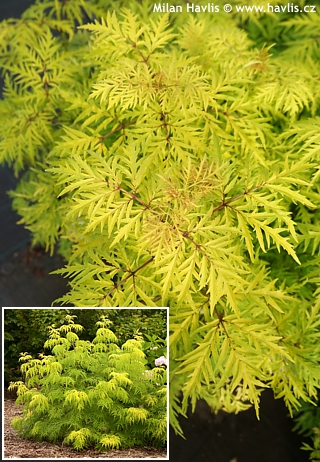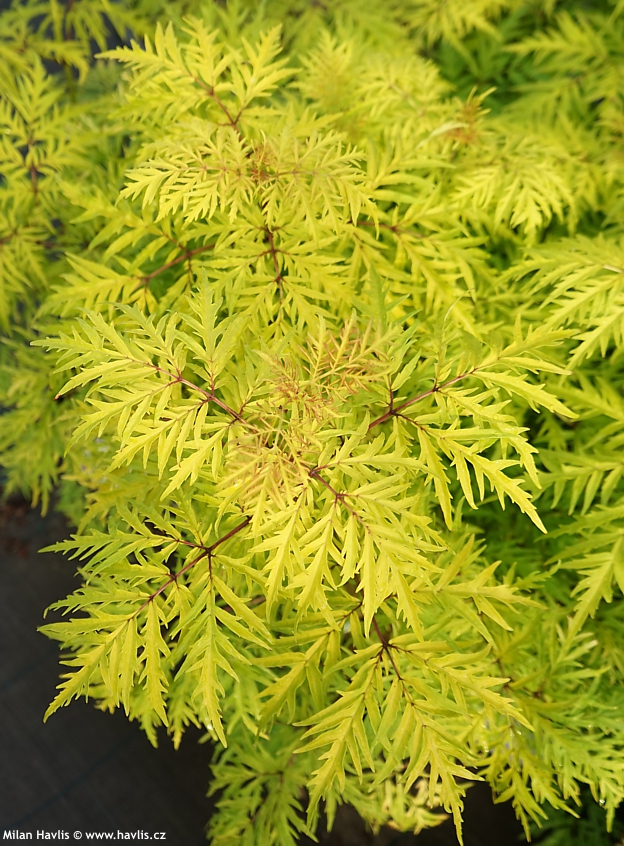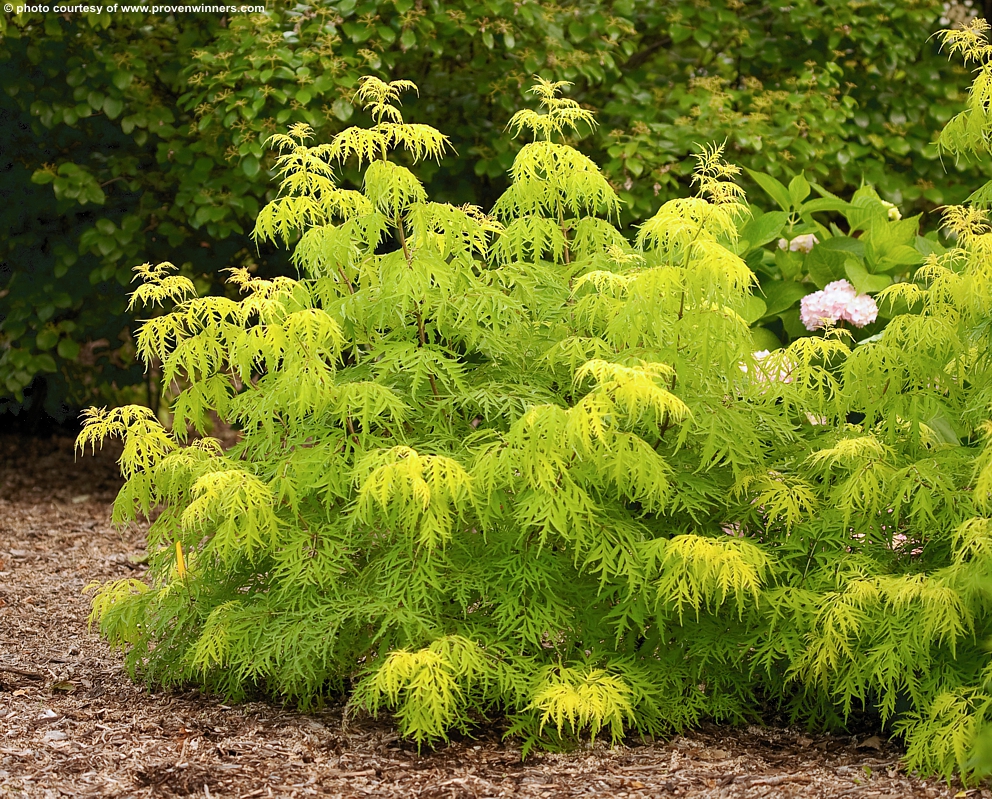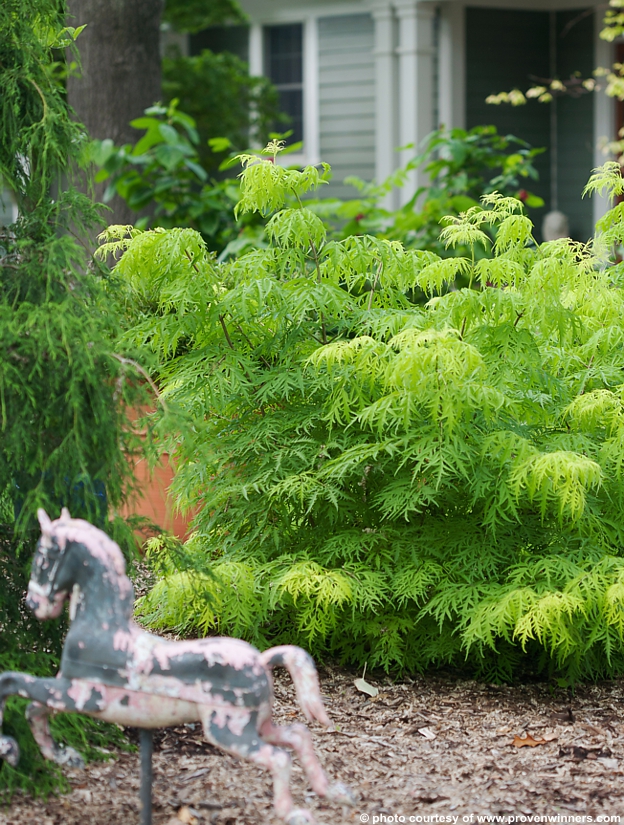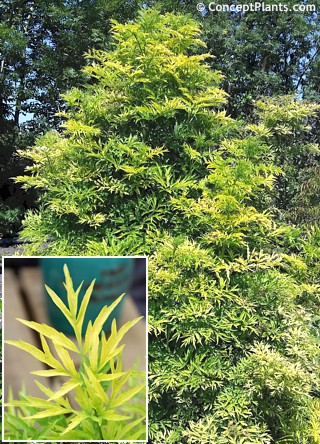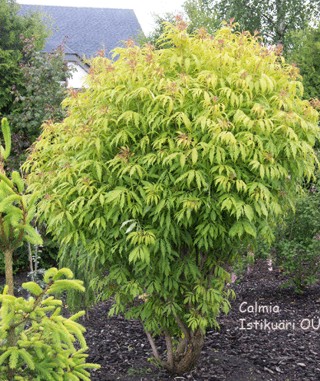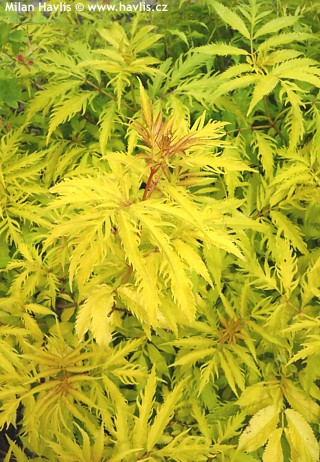Sambucus racemosa 'Smnsrd4' LEMONY LACE® cut leaf red-berried elder
Sambucus
Aren’t the breeders krafty, I often say to myself. Take European elder, for instance. This omnipresent shrub grows anywhere, without any maintenance and the more you prune it the thicker it gets. Well, what a promising start for cultivation, someone said. And here we are! So, forget this common weed of our countryside and dive into the magic world of SAMBUCUS, the world of colours, shapes and sizes that, with perhaps 10 different varieties, could well do for one complete garden.
LEMONY LACE® is a compact, brightly coloured variety of red-berried elder. It has striking foliage that will perfectly contrast with dark green or purple-leaved shrubs. The deciduous, pinnate leaves are finely cut and may look like a short fern frond. Their colour is bright golden yellow with orange tips when they emerge, turning chartreuse in summer. Stalks and young twigs are maroon. The plant grows moderately into a compact and dense, almost mounded shrub. Thanks to bright colour and fine texture of maple-like foliage it will light up every mixed border and soften up beds and hedges with large-leaved shrubs or conifers.
This variety is not a profuse bloomer. It makes solitary, mid-sized, terminal panicles of creamy white flowers that are followed by red berries whose seeds contain small amounts of amygdalin. That, if consumed in quantity, may cause poisoning to sensitive individuals. LEMONY LACE® was bred by Timothy D. Wood from Michigan, USA, as a cross between Dropmore Fernleaf and Sutherland Gold varieties. The first plant was selected in 2006 and patent No. PP26613 was granted in 2016.
Sambucus varieties of garden origin, once established, seldom need pruning or shaping as they grow reliably into nice shapes. Yet they can be kept smaller or rejuvenated, ideally in early spring after frosts. By cutting it back you will gain an elegant, dense shrub with plenty of new branches and healthy foliage. It tolerates any soil apart from too heavy and water-logged, and any location. But it will exhibit best foliage colour and habit in full sun and moist, humus-rich soil. Fully hardy to approx. -40°C (USDA zone 3).
Last update 02-12-2020

































